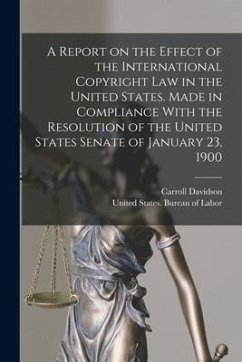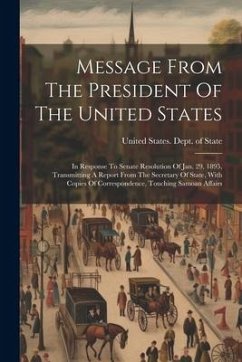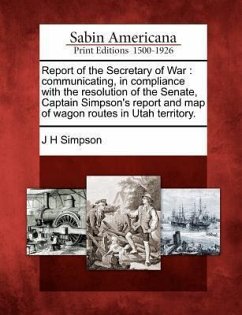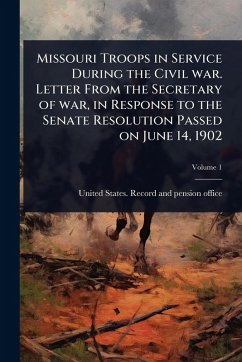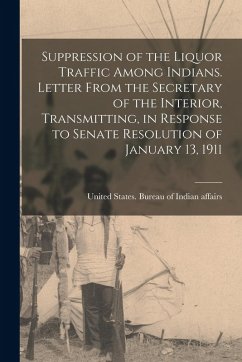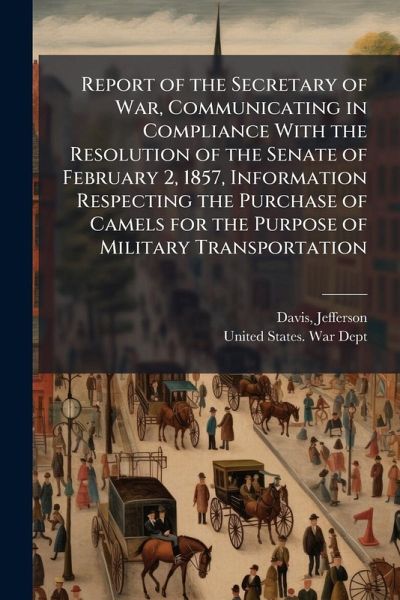
Report of the Secretary of War, Communicating in Compliance With the Resolution of the Senate of February 2, 1857, Information Respecting the Purchase of Camels for the Purpose of Military Transportation
Versandkostenfrei!
Versandfertig in über 4 Wochen
20,99 €
inkl. MwSt.
Weitere Ausgaben:

PAYBACK Punkte
10 °P sammeln!
This is a historical report from the Secretary of War regarding the purchase of camels for military transportation. Communicated in compliance with the resolution of the Senate on February 2, 1857, the document provides information on the experimental use of camels by the U.S. Army in the mid-19th century. The report details the rationale behind the acquisition of camels, the challenges and benefits observed during their use, and insights into their suitability for military operations in arid and semi-arid regions of the United States. Jefferson Davis, as Secretary of War, played a significant...
This is a historical report from the Secretary of War regarding the purchase of camels for military transportation. Communicated in compliance with the resolution of the Senate on February 2, 1857, the document provides information on the experimental use of camels by the U.S. Army in the mid-19th century. The report details the rationale behind the acquisition of camels, the challenges and benefits observed during their use, and insights into their suitability for military operations in arid and semi-arid regions of the United States. Jefferson Davis, as Secretary of War, played a significant role in promoting this initiative. This document offers valuable insights into a unique chapter in American military history and the exploration of alternative modes of transportation. This work has been selected by scholars as being culturally important, and is part of the knowledge base of civilization as we know it. This work was reproduced from the original artifact, and remains as true to the original work as possible. Therefore, you will see the original copyright references, library stamps (as most of these works have been housed in our most important libraries around the world), and other notations in the work. This work is in the public domain in the United States of America, and possibly other nations. Within the United States, you may freely copy and distribute this work, as no entity (individual or corporate) has a copyright on the body of the work. As a reproduction of a historical artifact, this work may contain missing or blurred pages, poor pictures, errant marks, etc. Scholars believe, and we concur, that this work is important enough to be preserved, reproduced, and made generally available to the public. We appreciate your support of the preservation process, and thank you for being an important part of keeping this knowledge alive and relevant.






